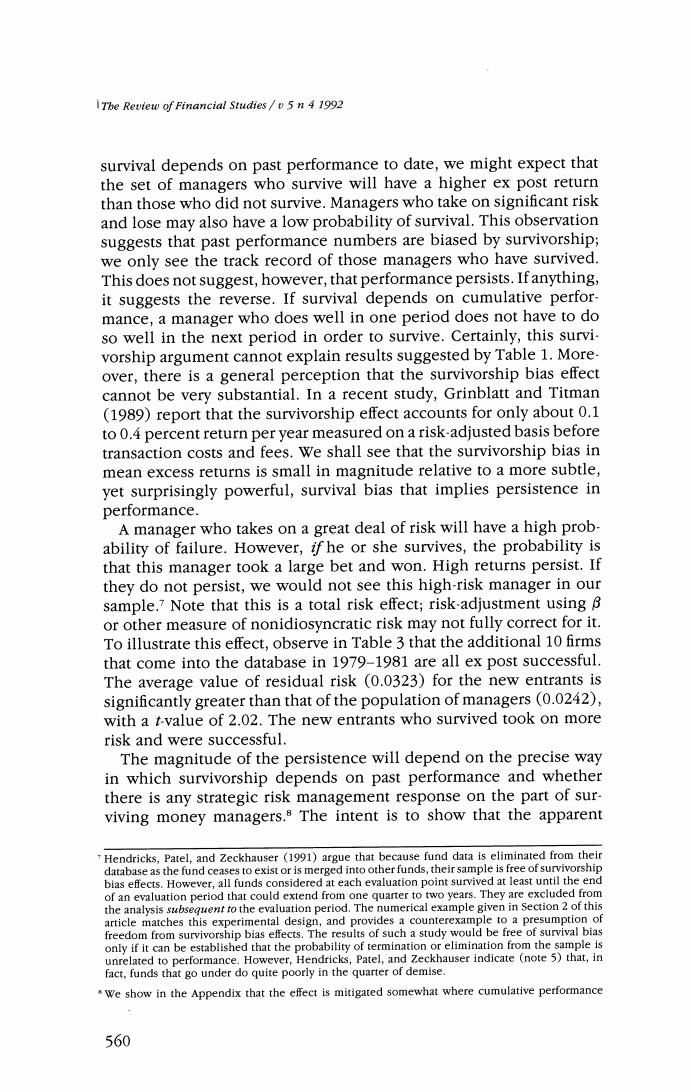正在加载图片...

Tbe Review of Financial Studtes/v 5 n 4 1992 survival depends on past performance to date,we might expect that the set of managers who survive will have a higher ex post return than those who did not survive.Managers who take on significant risk and lose may also have a low probability of survival.This observation suggests that past performance numbers are biased by survivorship; we only see the track record of those managers who have survived. This does not suggest,however,that performance persists.If anything, it suggests the reverse.If survival depends on cumulative perfor- mance,a manager who does well in one period does not have to do so well in the next period in order to survive.Certainly,this survi- vorship argument cannot explain results suggested by Table 1.More. over,there is a general perception that the survivorship bias effect cannot be very substantial.In a recent study,Grinblatt and Titman (1989)report that the survivorship effect accounts for only about 0.1 to 0.4 percent return per year measured on a risk-adjusted basis before transaction costs and fees.We shall see that the survivorship bias in mean excess returns is small in magnitude relative to a more subtle, yet surprisingly powerful,survival bias that implies persistence in performance. A manager who takes on a great deal of risk will have a high prob- ability of failure.However,if he or she survives,the probability is that this manager took a large bet and won.High returns persist.If they do not persist,we would not see this high-risk manager in our sample.7 Note that this is a total risk effect;risk-adjustment using B or other measure of nonidiosyncratic risk may not fully correct for it. To illustrate this effect,observe in Table 3 that the additional 10 firms that come into the database in 1979-1981 are all ex post successful. The average value of residual risk (0.0323)for the new entrants is significantly greater than that of the population of managers(0.0242), with a t-value of 2.02.The new entrants who survived took on more risk and were successful. The magnitude of the persistence will depend on the precise way in which survivorship depends on past performance and whether there is any strategic risk management response on the part of sur- viving money managers.8 The intent is to show that the apparent Hendricks,Patel,and Zeckhauser (1991)argue that because fund data is eliminated from their database as the fund ceases to exist or is merged into other funds,their sample is free of survivorship bias effects.However,all funds considered at each evaluation point survived at least until the end of an evaluation period that could extend from one quarter to two years.They are excluded from the analysis subsequent to the evaluation period.The numerical example given in Section 2 of this article matches this experimental design,and provides a counterexample to a presumption of freedom from survivorship bias effects.The results of such a study would be free of survival bias only if it can be established that the probability of termination or elimination from the sample is unrelated to performance.However,Hendricks,Patel,and Zeckhauser indicate (note 5)that,in fact,funds that go under do quite poorly in the quarter of demise. .We show in the Appendix that the effect is mitigated somewhat where cumulative performance 560